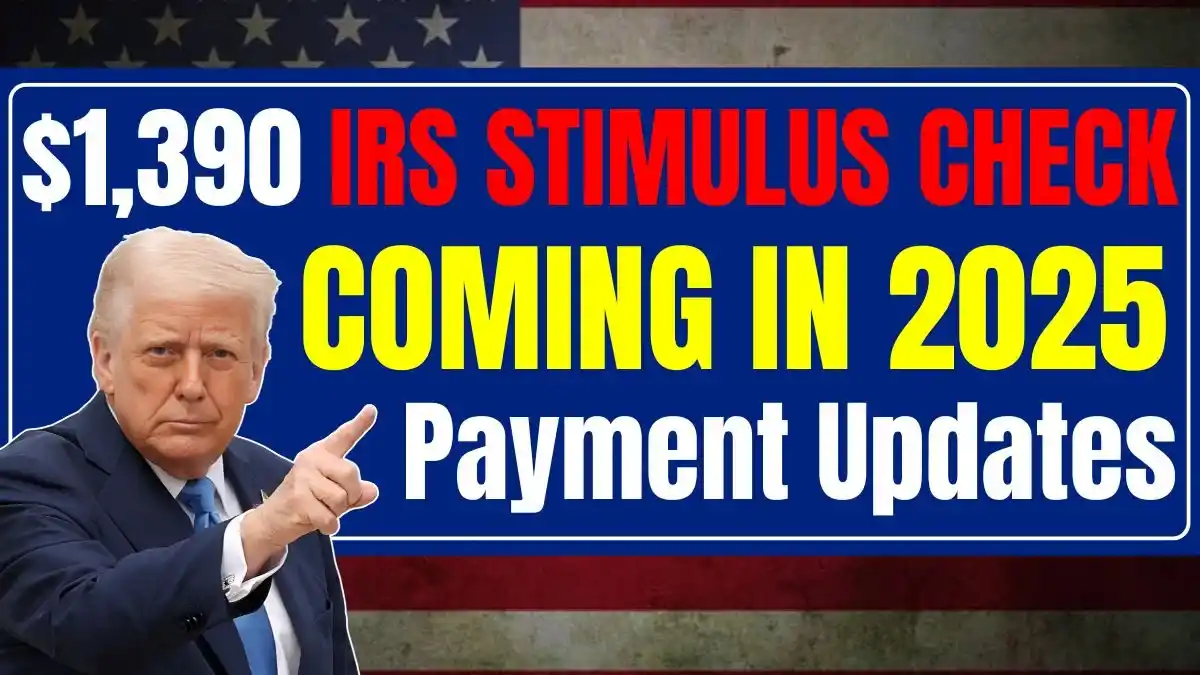$1,390 Stimulus Check Coming in 2025 A new $1,390 IRS stimulus check may be coming in 2025! Check eligibility, payment methods, key dates, and how to avoid scams. Learn if you qualify for this tax-free relief.
A new round of IRS economic relief is on the horizon, and this time it’s a $1,390 stimulus check aimed at helping millions of Americans cope with rising inflation, rent pressure, and basic living expenses. While still under negotiation, this mid-2025 payout could provide meaningful financial relief for low- and middle-income earners.
Let’s explore the benefits, eligibility, payment methods, and everything you need to know.
What Is the $1,390 Stimulus Check?
The $1,390 IRS stimulus check is part of a proposed economic relief package designed to assist low-income households, middle-class families, and those impacted by rising living costs.
It is expected to be:
-
Tax-free
-
Not counted as income in your 2025 tax returns
-
Not affecting eligibility for other government benefits like SNAP, Medicaid, or housing assistance
Purpose and Benefits of the $1,390 Stimulus Check
The key goals of this financial aid include:
-
Helping families cover basic necessities like rent, groceries, and bills
-
Providing emergency support during ongoing inflation
-
Ensuring financial stability for vulnerable citizens
Benefits Summary:
-
$1,390 Direct Relief
-
No additional taxes
-
Won’t affect existing benefits
-
Paid directly by the IRS
-
Arrives via Direct Deposit, Check, or Debit Card
Who Is Eligible? – IRS Criteria
To receive the $1,390 check, you must meet the income and filing requirements set by the IRS.
| Filing Status | Income Limit |
|---|---|
| Single Filers | Up to $75,000 |
| Married Filing Jointly | Up to $150,000 |
| Head of Household | Up to $112,500 |
Additional Conditions:
-
Must be a U.S. citizen or permanent resident
-
Must have a valid Social Security number
-
Must have filed taxes for 2023 or 2024
-
Not claimed as a dependent on someone else’s return
💡 If you received previous stimulus payments and your financial situation hasn’t changed significantly, you may likely qualify again.
Expected Payment Date – When Will the $1,390 Check Arrive?
While no official release date has been confirmed by the government yet, sources suggest:
Payments may begin by mid-summer 2025.
To ensure on-time delivery, make sure your bank account information and mailing address are updated at irs.gov.
How You’ll Get Paid – 3 IRS Methods
The IRS plans to distribute payments using the same methods used in past stimulus checks:
-
Direct Deposit
– Fastest, secure, and automatic if the IRS has your updated bank info. -
Paper Check
– Sent to your mailing address if you don’t have direct deposit. -
EIP Debit Card
– Some recipients will receive their check via a prepaid debit card.
Avoid Scams – Be Cautious
Scammers often target Americans during stimulus rollouts. Be alert for:
-
Fake IRS emails, texts, or phone calls
-
Requests for bank information, SSN, or “processing fees”
-
Fraudulent websites posing as the IRS.
| Topic | Summary |
|---|---|
| Amount | $1,390 for eligible citizens |
| Taxable? | No – it’s completely tax-free |
| Eligible Groups | Low to mid-income earners, tax filers, SSN holders |
| Expected Date | Mid-summer 2025 (tentative) |
| Safety Tip | Avoid scams and update info only at irs.gov |
Q. How much is the stimulus payout in 2025?
A. $1,390 for each eligible recipient.
Q. Is this amount taxable?
A. No, it is tax-free and doesn’t need to be reported as income.
Q. Who qualifies for the stimulus check?
A. U.S. citizens or residents earning under the income thresholds and who filed taxes in 2023 or 2024.
Q. When will the payment be received?
A. Likely by mid-summer 2025, though the official date is still pending.
Q. Do I need to apply to receive the payment?
A. In most cases, no. If your tax return and bank info are updated, you’ll receive the payment automatically.
Final Words
The $1,390 stimulus check in 2025 could be a lifeline for many families struggling with basic expenses. If you fall within the eligibility guidelines, be sure your IRS information is current and stay alert to fraud attempts.
This payment is part of a broader effort to stabilize the economy and support American households during uncertain times.





